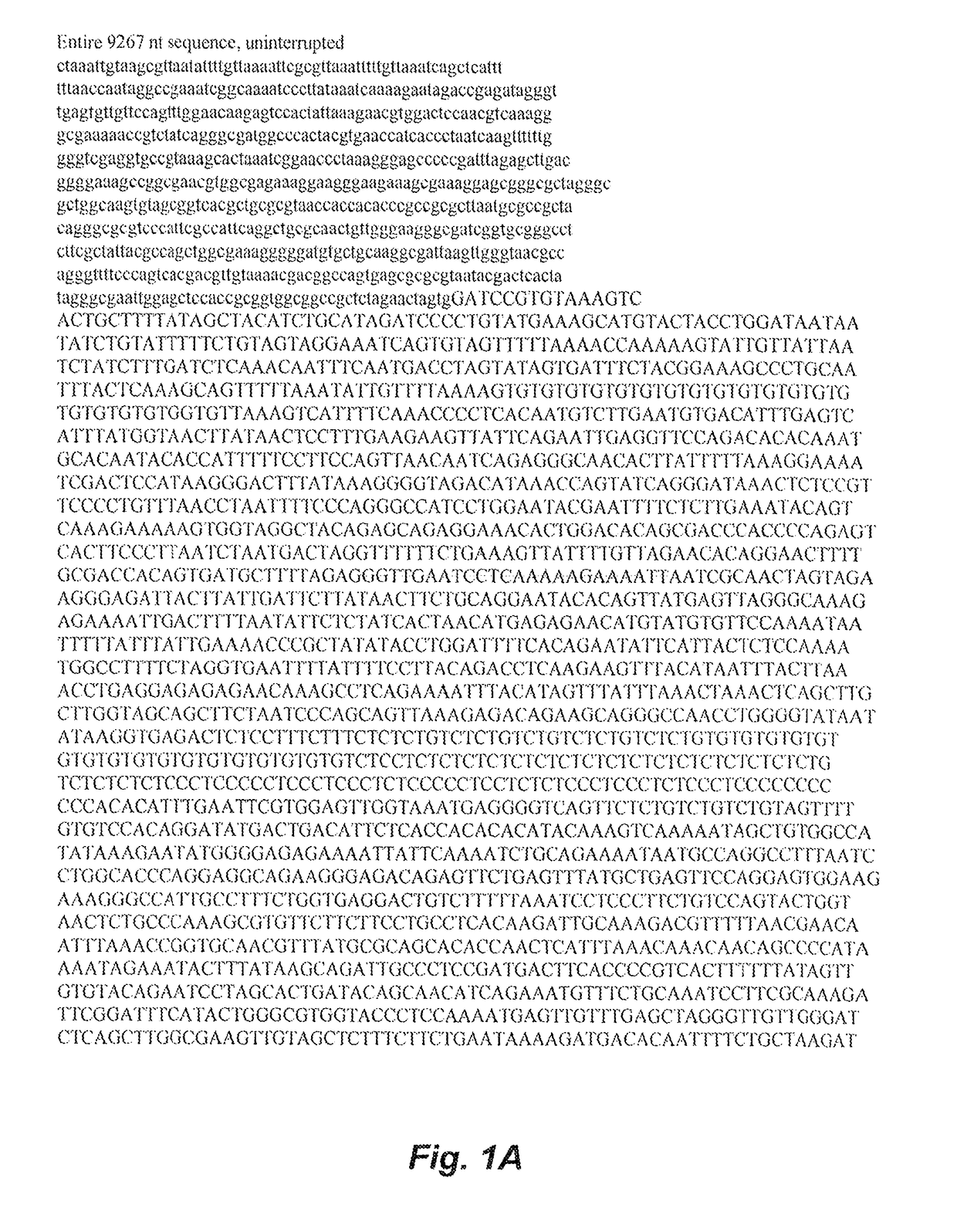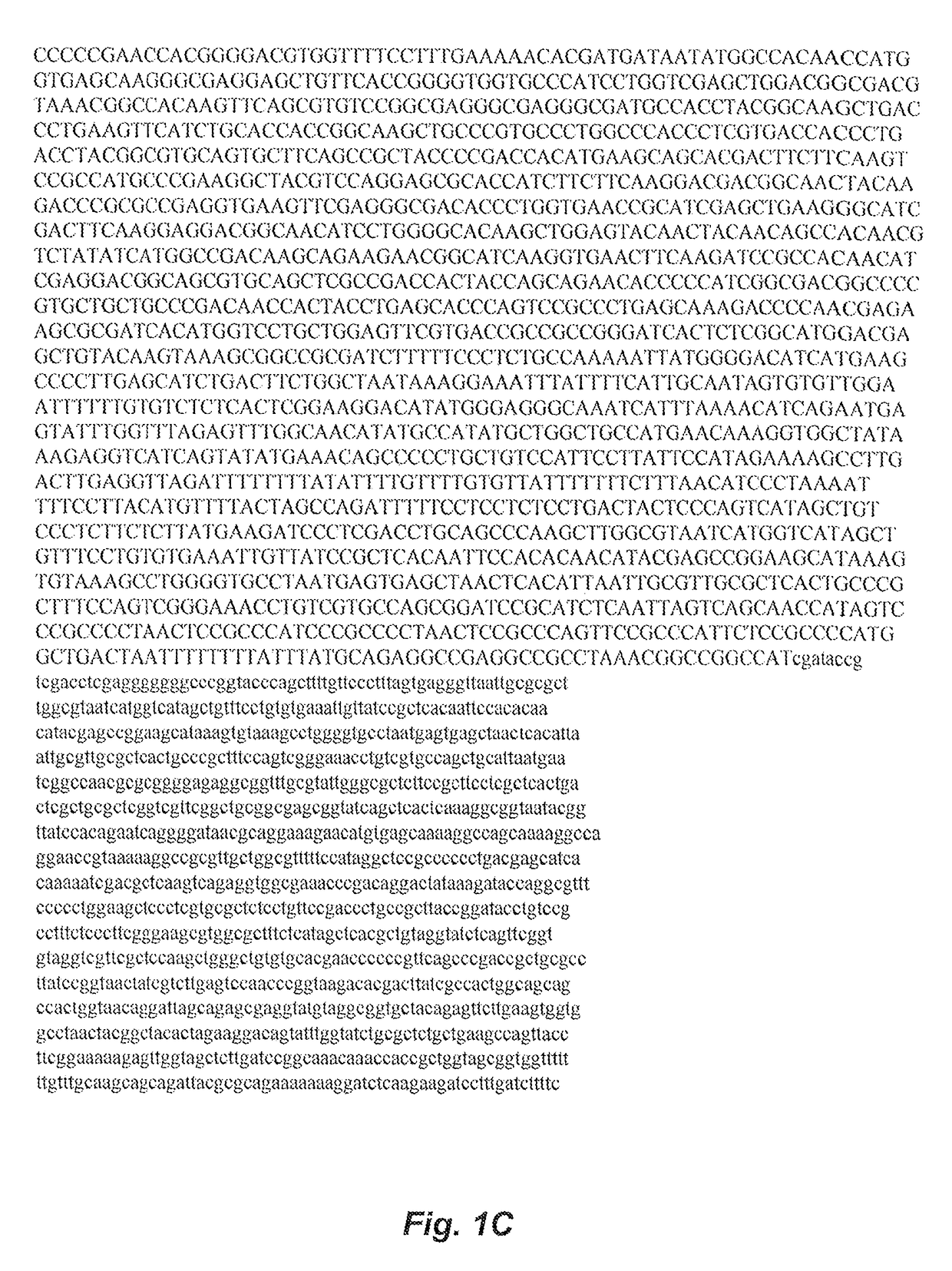Transgenic mouse having a transgene that converts a prodrug into a cytotoxic compound in senescent cells
a transgene and cytotoxic technology, applied in the field of transgenic mouse, can solve the problems of destroying affecting the ability of the body to adapt to the environment, etc., to achieve suppressed cellular senescence, and treat or reduce the likelihood of developing an age-related disorder or age-sensitive
- Summary
- Abstract
- Description
- Claims
- Application Information
AI Technical Summary
Benefits of technology
Problems solved by technology
Method used
Image
Examples
example 1
Preparation of P16-3MR Transgenic Mice
[0145]This Example describes preparation of a transgenic mouse comprising a p16ink4a promoter operatively linked to a trimodal fusion protein.
[0146]The promoter, p16Ink4a, which is transcriptionally active in senescent cells but not in non-senescent cells (see, e.g., Wang et al., J. Biol. Chem. 276:48655-61 (2001); Baker et al., Nature, supra) was engineered into a nucleic acid construct. The p16Ink4a gene promoter (approximately 100 kilobase pairs) was introduced upstream of a nucleotide sequence encoding a trimodal reporter fusion protein. Alternatively, a truncated p16Ink4a promoter may be used (see FIGS. 1 and 2 providing an exemplary vector and exemplary promoter sequence) (see, e.g., Baker et al., Nature, supra; International Application Publication No. WO / 2012 / 177927; Wang et al., J. Biol. Chem. 276:48655-61 (2001)). The trimodal reporter protein, the expression of which is driven by the p16ink4a promoter in senescent cells, is termed 3MR...
example 2
Effects of Therapy-Induced Senescence on Aging
[0147]This example identifies the role of senescence-inducing stimuli, particularly radiation and chemotherapy treatment, on declining health parameters and age-sensitive traits using a p16-FKBP-caspase-8 (INK-ATTAC) transgenic animal model. In particular, the example determines the extent to which chemotherapy and gamma radiation induce cellular senescence, identifies that cellular senescence induced by various treatment regimens is deleterious for tissue structure and function, and identifies that clearance of therapy-induced senescent cells improves age-sensitive traits and other health parameters following chemotherapy and radiation.
[0148]Briefly, INK-ATTAC mice are aged 10-12 weeks. Cohorts of mice are treated with 4 Gy IR (4 cycles), doxorubicin (3-4 mg / kg i.p. daily for five consecutive days: 3 cycles), docetaxel (25 mg / kg i.p. every seven days for 3 cycles), or cisplatin (6 mg / kg i.p. every twenty days for 3 cycles) to induce cel...
example 3
Effects of Removing Senescent Cells from Aging Animal
[0152]Clearance of therapy-induced senescent cells improves age-sensitive traits and other health parameters in aged animals. Wild type INK-ATTAC transgenic animals from each of lineage 3 (TG3) and lineage 5 (TG5) were used in the experiments (see Baker et al., Nature, supra). INK-ATTAC transgenic mice were aged 10-12 weeks, and then cohorts of animals were treated with AP20187 or PBS (control) on a weekly basis from the start of treatment. As shown in FIG. 4, animals treated with AP20187 had an average lifespan of approximately 26 months compared with 21 months for control.
[0153]When the animals reached 18 months of age, several measures of health and lifespan were taken. Weight, fat mass, activity measurements (treadmill exercise tests to measure distance traveled and duration of exercise) were compared between untreated female mice (n=16) and AP20187-treated female mice (n=21), and compared between untreated male mice (n=19) an...
PUM
| Property | Measurement | Unit |
|---|---|---|
| molecular weights | aaaaa | aaaaa |
| molecular weights | aaaaa | aaaaa |
| molecular weights | aaaaa | aaaaa |
Abstract
Description
Claims
Application Information
 Login to View More
Login to View More - R&D
- Intellectual Property
- Life Sciences
- Materials
- Tech Scout
- Unparalleled Data Quality
- Higher Quality Content
- 60% Fewer Hallucinations
Browse by: Latest US Patents, China's latest patents, Technical Efficacy Thesaurus, Application Domain, Technology Topic, Popular Technical Reports.
© 2025 PatSnap. All rights reserved.Legal|Privacy policy|Modern Slavery Act Transparency Statement|Sitemap|About US| Contact US: help@patsnap.com



